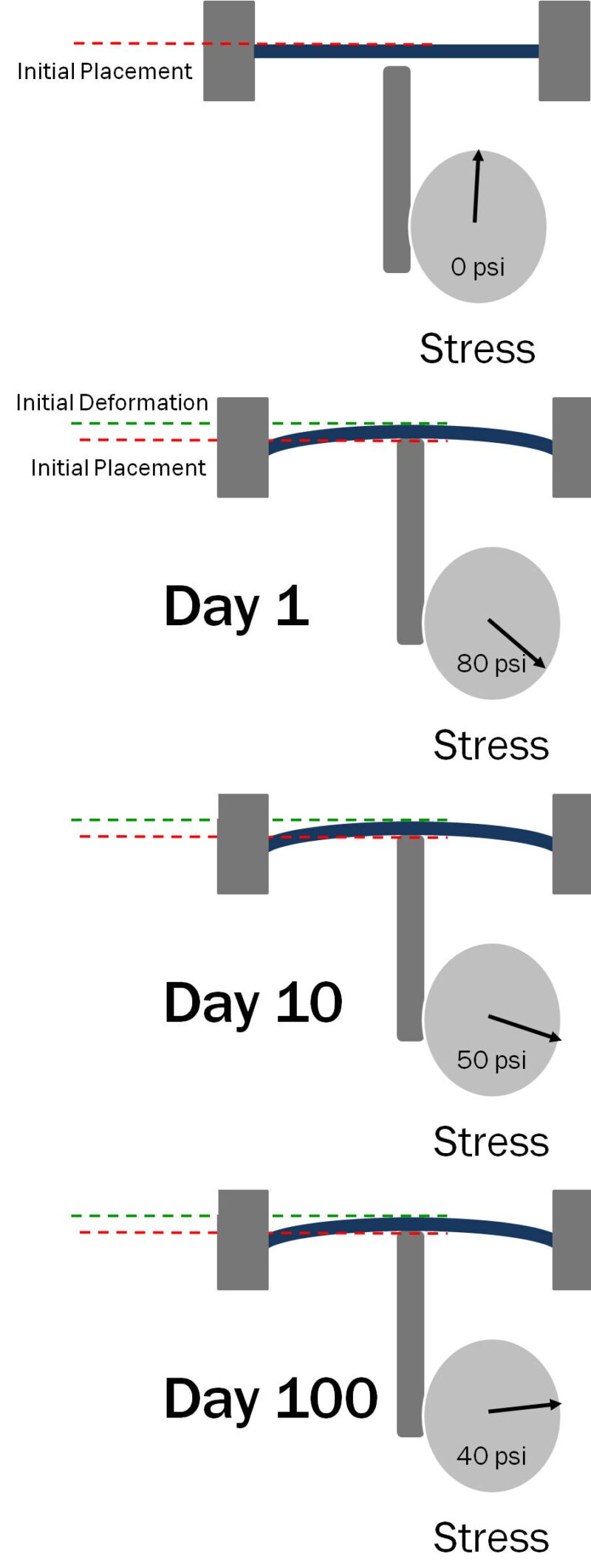This paper was originally published and presented at The Society of Plastics Engineers’ ANTEC in 2014.
The response of polymeric materials under long-term loading will vary due to several interrelated factors including time, temperature, and the magnitude of loading experienced by the material. A common failure mode encountered in plastic parts under long-term loading is creep rupture. Creep rupture describes a slow-crack growth failure in polymeric parts that is a consequence of molecular disentanglement over time as a result of exposure to continuous stress. This time-related phenomenon can lead to unexpected failures in plastic parts after days, months, or years in service. While creep rupture is more predictable and better understood under constant stress loading, creep rupture resulting from a constant strain condition is frequently encountered in several applications and is more complex to interpret. This complexity is due to the competing mechanisms of plastic creep and stress relaxation. This paper will provide insight into several long-term material behaviors in polymeric materials, with an emphasis on a scenario involving creep rupture as a result of constant strain over time.

Graphical representation of the change in stress over time associated with stress relaxation from the application of static strain.
The viscoelastic nature of polymeric materials, inherent because of their macro molecular structure, leads to temperature dependence. In general, the temperature dependence of plastics has been well documented and is commonly understood. However, viscoelasticity also produces time dependency within plastics, and this is often overlooked. Because of their polymeric nature, the properties of plastics are subject to change based upon time and loading history.
Just as physical properties determined at ambient temperature cannot predict the performance at elevated temperature, short term properties cannot project the long term performance of plastics. Understanding the time dependency of plastic part performance is important to avoid premature and unexpected failure. The performance of the molded plastic part, the tangible manifestation of the design and processing, is limited by the physical, mechanical, and thermal properties of the material. Failure to understand these properties can lead to catastrophic consequences. Failure associated with the exertion of stress over time accounts for a significant number of failures within plastic components. One study attributes 22% of all plastic component failures to such mechanisms.
Creep is the time-dependent change in the dimension of a plastic article when it is subjected to a constant stress2. The stress can be applied through tensile, compressive, shear, torsional, or flexural loading. Regardless of the form, normal stress (σ) is the ratio of the applied force (F) divided by the cross-sectional area of the loaded member (A), as: σ=F/A. As indicated above, creep is important in plastics because of viscoelasticity. Common design features that expose a plastic material to static stress include structural components such as beams, columns, and hanging supports; reinforcing bars with torsional loading; and pipes and tanks under hydrostatic pressure. As indicated above, creep is important in plastics because of viscoelasticity. Common design features that expose a plastic material to static stress include structural components such as beams, columns, and hanging supports; reinforcing bars with torsional loading; and pipes and tanks under hydrostatic pressure.
Stress relaxation is the time-dependent reduction in stress within a plastic article when it is subjected to a constant strain3. Essentially, stress relaxation describes the polymer’s propensity to shift its molecular arrangement to achieve a lower stress state4. This is illustrated in Figure 2, where a sample is placed under a bending load and the strain is held constant. Over time, while under static strain, the measured stress required to maintain a constant deflection or deformation in the specimen will decrease. Stress relaxation differs from creep in the fact that the viscoelastic properties inherent to plastics result in a reduction of stress while under constant strain, whereas creep refers to a change in the strain while under a constant stress. Although creep and stress relaxation lead to different measurable properties within the plastic due to the differing loading conditions, the molecular rearrangement mechanism is relatively similar in both cases. With both mechanisms a reduction in apparent modulus is observed over time. In stress relaxation, this reduction in apparent modulus occurs at a constant strain, from dynamic mechanical analysis – time temperature superposition experimentation.

Graphical representation of the apparent reduction in strength over time associated with creep and the reduction in applied stress over time associated with stress relaxation in a constant strain condition.
This paper was authored by Jeffrey A. Jansen and Jacob N. Nemec.
